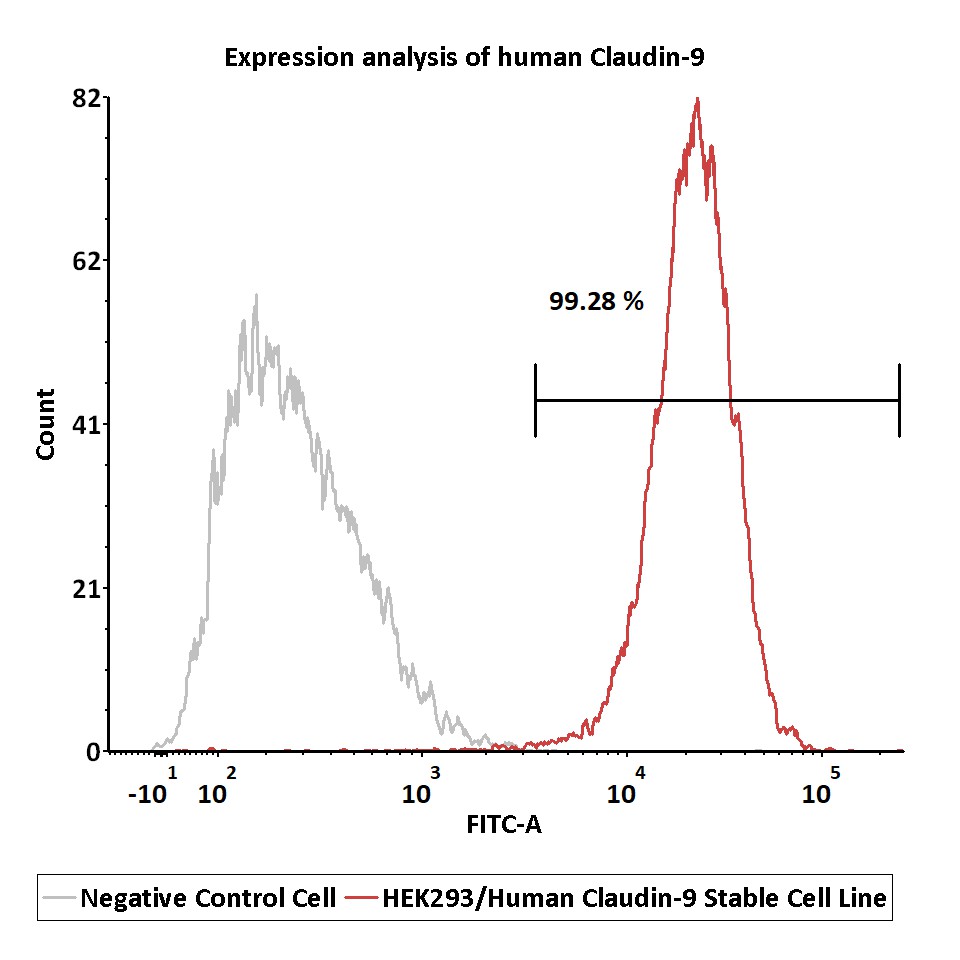 Request a FREE Sample of our FcRn Binding Kit!
Request a FREE Sample of our FcRn Binding Kit! Request a FREE Sample of our Fc gamma RI / CD64 Binding Kit !
Request a FREE Sample of our Fc gamma RI / CD64 Binding Kit !
 Happy Holiday! Limited Keychain here with your next order
Happy Holiday! Limited Keychain here with your next order Happy Holiday! Limited Keychain here with your next order
Happy Holiday! Limited Keychain here with your next order
 Request a FREE sample of our GMP products!
Request a FREE sample of our GMP products!  Request a FREE sample of our GMP products!
Request a FREE sample of our GMP products!
| Cat. No. | Species | Product Description | Structure | Purity | Feature |
|---|---|---|---|---|---|
| CHEK-ATP139 | Human | HEK293/Human Claudin-9 Stable Cell Line | |||
| CL9-H52P5 | Human | Human Claudin-9 / CLDN9 Full Length Protein (VLP) |


|
||
| CL9-H5586 | Human | Human Claudin-9 / CLDN9 Protein, His,Twin-Strep Tag (Detergent) |  |

|


|

Fig 1. Expression analysis of human Claudin-9 on HEK293/Human Claudin-9 Stable Cell Line by FACS.
Cell surface staining was performed on HEK293/Human Claudin-9 Stable Cell Line or negative control cell using anti-human Claudin-9 antibody followed by staining with FITC anti-mouse IgG antibody.

Human Claudin-9 Full Length Protein-VLP (Cat. No. CL9-H52P5) captured on L1 Chip can bind Anti-Claudin 9 antibody [YD4E9] with an affinity constant of 3.61 nM as determined in a SPR assay (Biacore 8K) (Routinely tested).
This web search service is supported by Google Inc.
